Toyota ToyoAce on:
[Wikipedia]
[Google]
[Amazon]
The Toyota ToyoAce is a light to medium
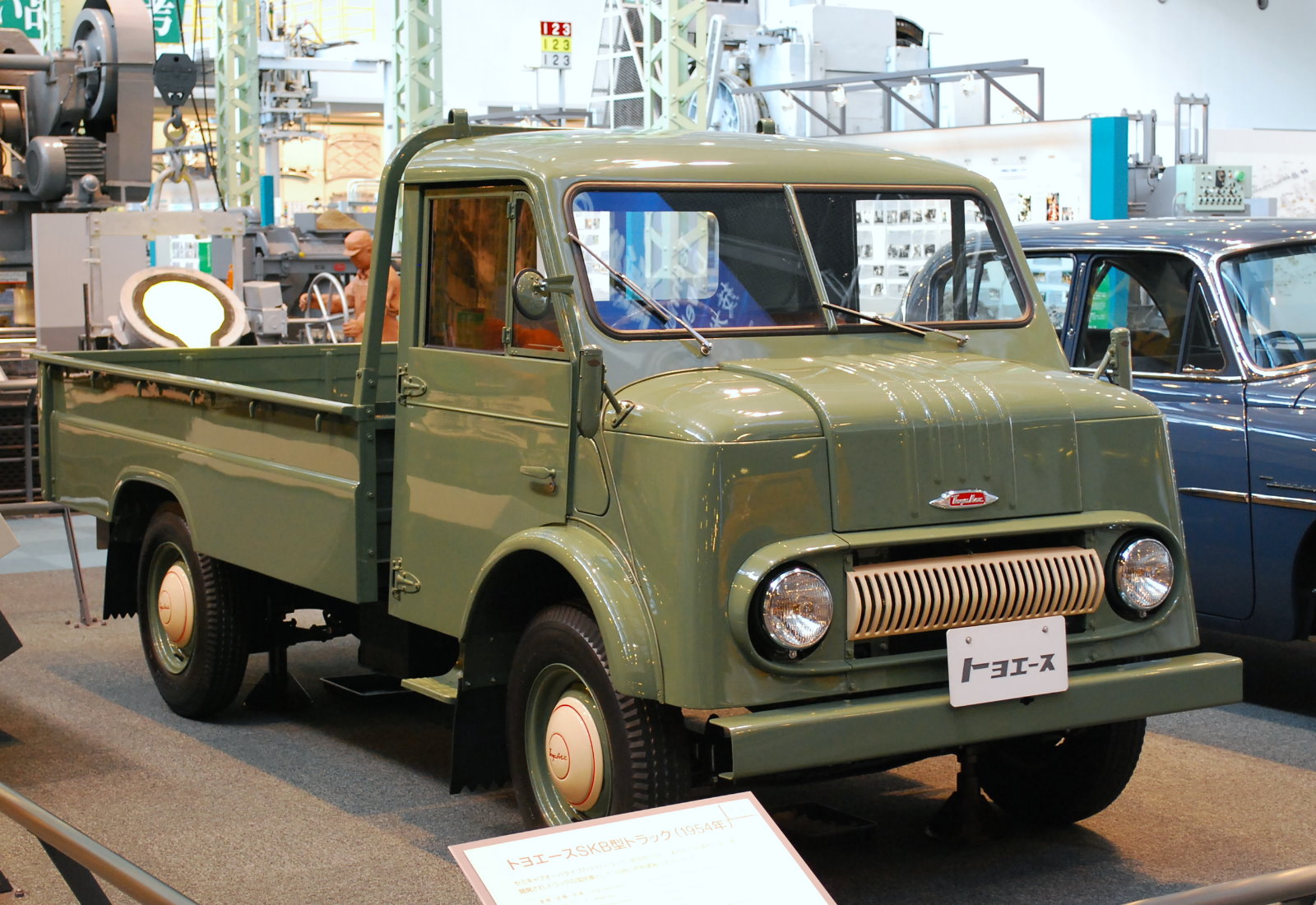 The first-generation ToyoAce was a one-ton truck of a semi-cab over design. It has a four-cylinder
The first-generation ToyoAce was a one-ton truck of a semi-cab over design. It has a four-cylinder
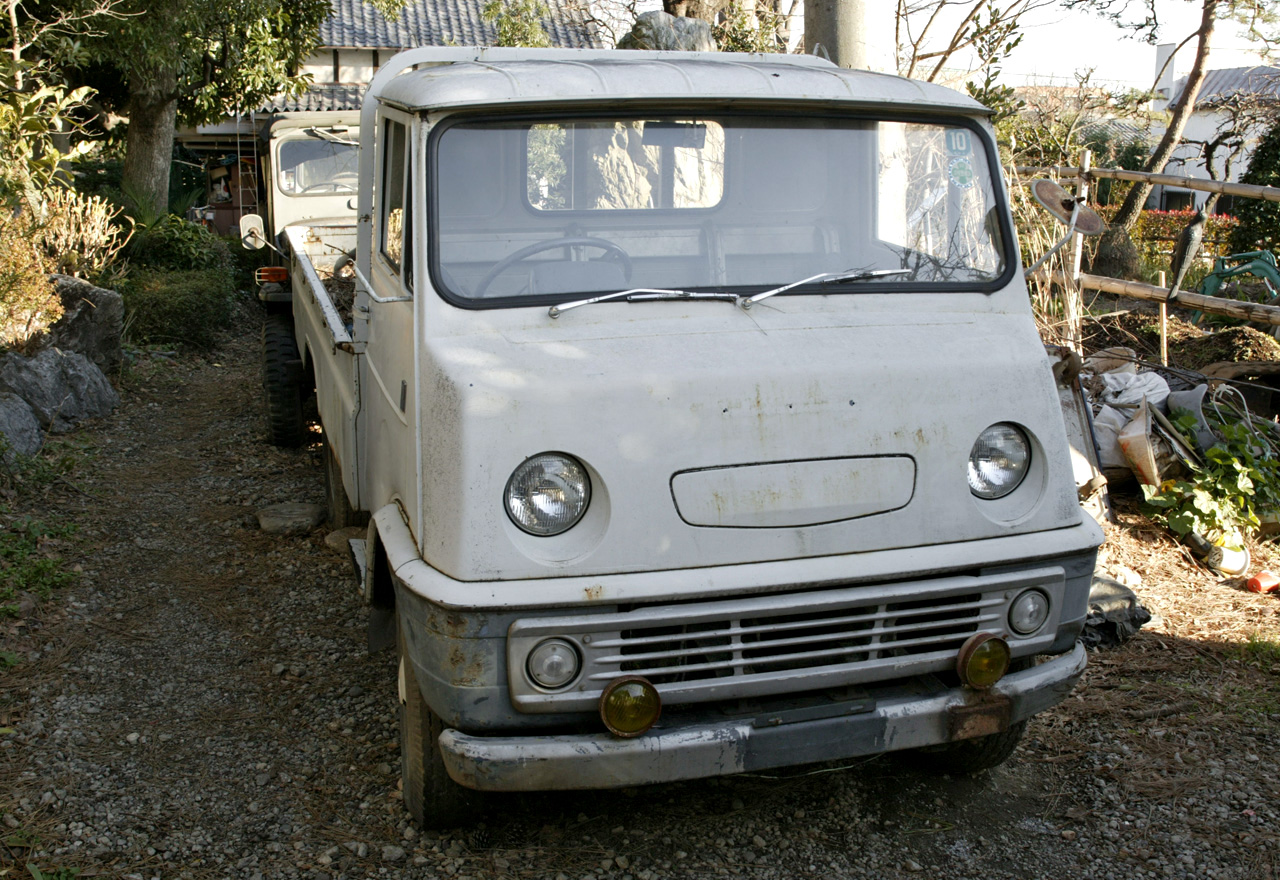 The semi-cab over layout was retained for the second-generation
The semi-cab over layout was retained for the second-generation
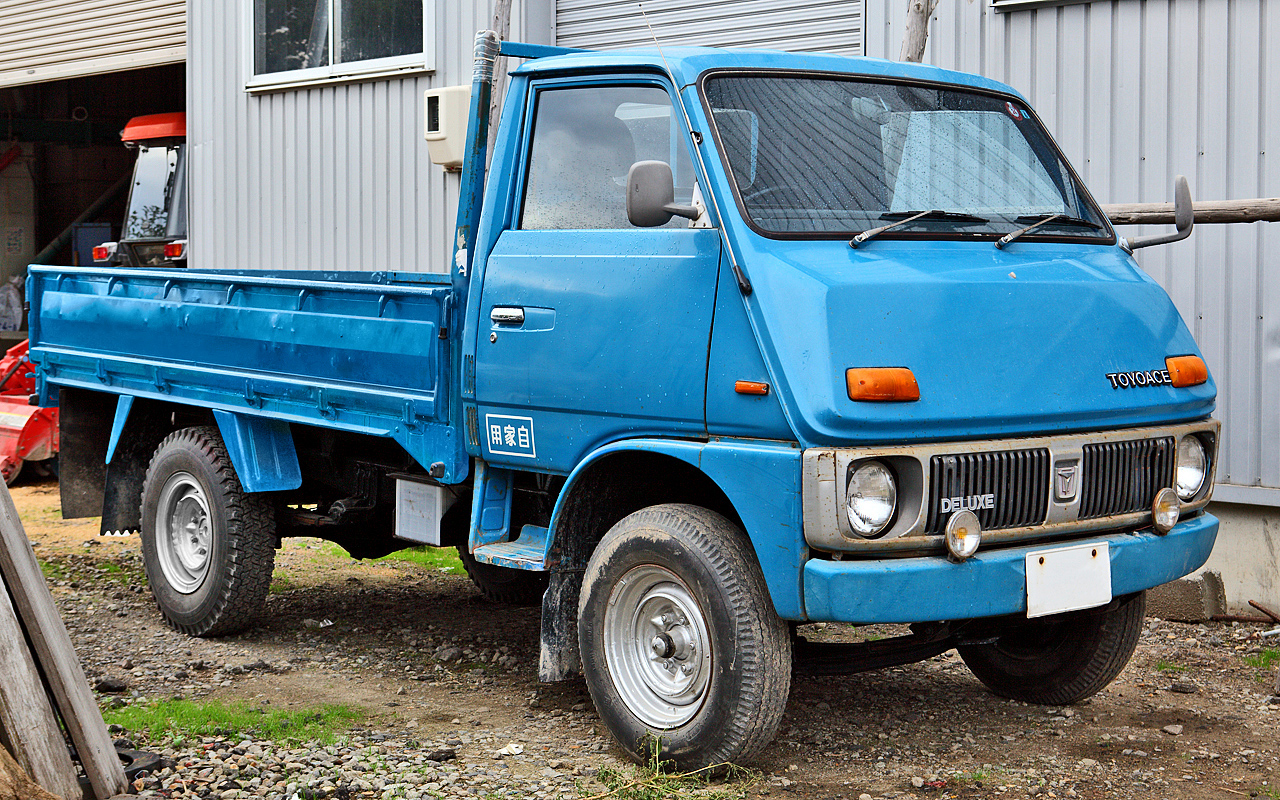 The third-generation ToyoAce received Y-series chassis codes to avoid confusion. It was introduced in August 1971 and had a much more modern design, and was available in several new body styles. There were 3P type and 12R gasoline engines (1.35 or 1.6 litres, from the 12R) as well as the 2.5-litre 2J diesel engine with . The diesel was introduced in July 1972. Payloads now ranged between . In August 1977 a special "just low" version appeared, with small twin rear wheels for a lower cargo surface.
Starting with this generation, the ToyoAce was used as the basis of a commercial van to accommodate passengers for commuting, called the
The third-generation ToyoAce received Y-series chassis codes to avoid confusion. It was introduced in August 1971 and had a much more modern design, and was available in several new body styles. There were 3P type and 12R gasoline engines (1.35 or 1.6 litres, from the 12R) as well as the 2.5-litre 2J diesel engine with . The diesel was introduced in July 1972. Payloads now ranged between . In August 1977 a special "just low" version appeared, with small twin rear wheels for a lower cargo surface.
Starting with this generation, the ToyoAce was used as the basis of a commercial van to accommodate passengers for commuting, called the
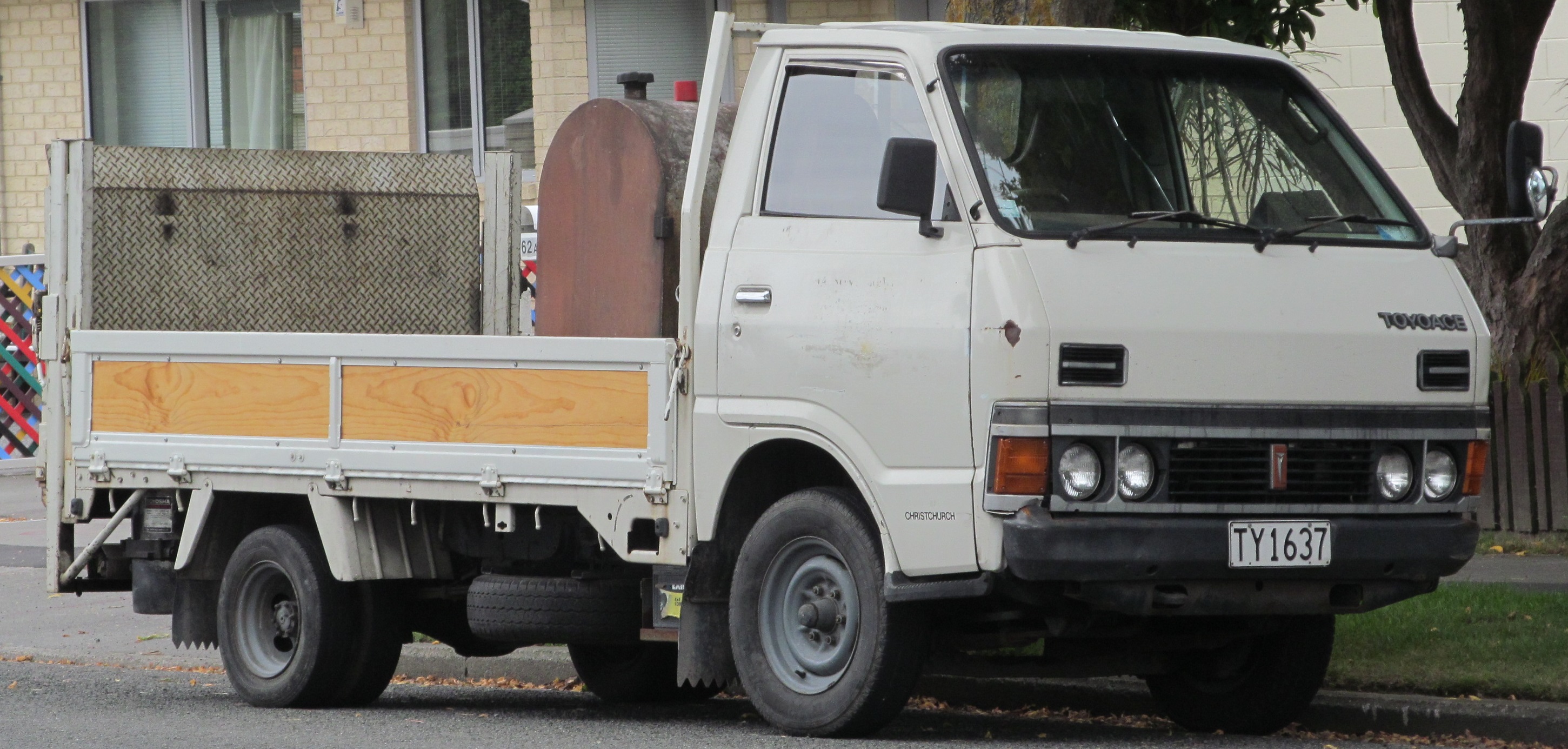 In 1982, a delivery van that allowed passengers to walk upright within the vehicle was introduced, called the
In 1982, a delivery van that allowed passengers to walk upright within the vehicle was introduced, called the
 Introduced in August 1985, the fifth-generation ToyoAce was based on the fifth-generation
Introduced in August 1985, the fifth-generation ToyoAce was based on the fifth-generation
 The sixth-generation (introduced in May 1995) was merged fully with the Dyna, still with Y-series chassis numbers for the lighter models and U-series for the heavier versions. The only difference between the Dyna and the ToyoAce from now on is the badging, and that they are sold through separate sales channels. The range expanded again, now also including a wide-bodied rebadging of the
The sixth-generation (introduced in May 1995) was merged fully with the Dyna, still with Y-series chassis numbers for the lighter models and U-series for the heavier versions. The only difference between the Dyna and the ToyoAce from now on is the badging, and that they are sold through separate sales channels. The range expanded again, now also including a wide-bodied rebadging of the
 In May 1999 the heavier diesel versions (1.75-3.5 tons) were replaced by the new seventh-generation ToyoAce. A four-ton model was new to the ToyoAce lineup. In June 2001, the lighter models were also replaced by the seventh-generation model.
In May 1999 the heavier diesel versions (1.75-3.5 tons) were replaced by the new seventh-generation ToyoAce. A four-ton model was new to the ToyoAce lineup. In June 2001, the lighter models were also replaced by the seventh-generation model.
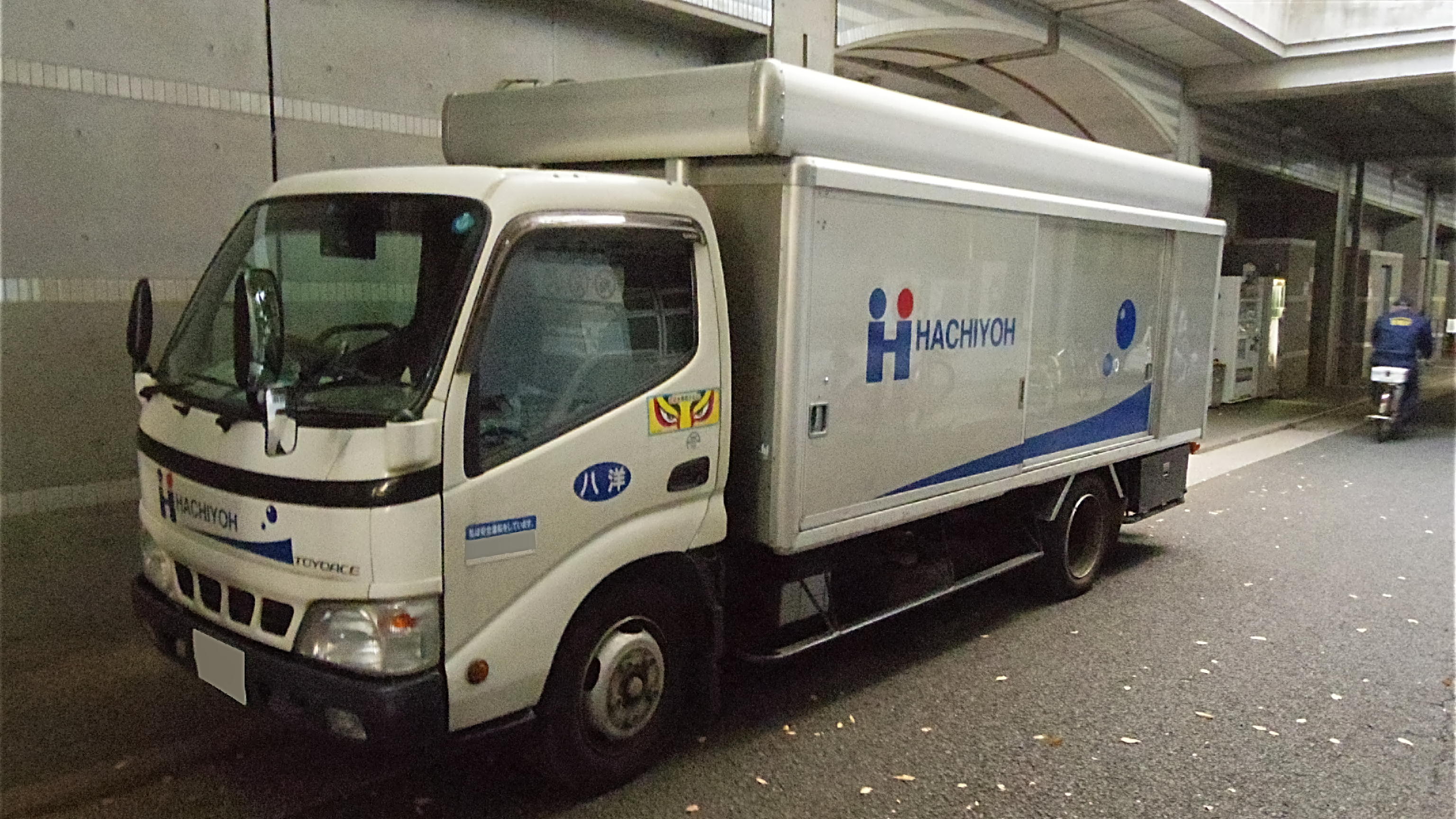 In June 2011 the eighth-generation ToyoAce appeared, now featuring hybrid drive systems in several models.
The ToyoAce got a minor change at the front and received a collision avoidance system and a lane-departure alert system.
In June 2011 the eighth-generation ToyoAce appeared, now featuring hybrid drive systems in several models.
The ToyoAce got a minor change at the front and received a collision avoidance system and a lane-departure alert system.
cab over
Cab-over, also known as cab over engine (COE), cab forward (U.S.), flat nose (Canada), or forward control (UK), is a body style of truck, bus, or van that has a vertical front, "flat face" or a semi-hood, with the cab of the truck sitting a ...
truck built by Toyota
is a Japanese multinational automotive manufacturer headquartered in Toyota City, Aichi, Japan. It was founded by Kiichiro Toyoda and incorporated on . Toyota is one of the largest automobile manufacturers in the world, producing about 10 ...
since September 1954. Until a renaming contest in 1956, the truck was sold as the "Toyopet Light Truck SKB". Since 1985 the ToyoAce and Dyna
The Toyota Dyna is a light to medium-duty cab over truck for commercial use. In the Japanese market, the Dyna is sold alongside its twin called the Toyoace. The Toyoace was a renaming of the Toyopet SKB Truck as a result of a 1956 public competi ...
truck lines have been merged, with the Dynas generally being intended for heavier duty work. In Japan, it was exclusive to Japanese Toyota dealerships called ''Toyopet Store
Toyota vehicles in Japan are distributed to numerous dealership chains throughout the country. Up to May 2020, each dealership chain had a different product offering, with some models restricted to one chain to maintain exclusivity. Since May 2020, ...
''.
__TOC__
History
First generation
 The first-generation ToyoAce was a one-ton truck of a semi-cab over design. It has a four-cylinder
The first-generation ToyoAce was a one-ton truck of a semi-cab over design. It has a four-cylinder sidevalve
A flathead engine, also known as a sidevalve engine''American Rodder'', 6/94, pp.45 & 93. or valve-in-block engine is an internal combustion engine with its poppet valves contained within the engine block, instead of in the cylinder head, as ...
inline-four
A straight-four engine (also called an inline-four) is a four-cylinder piston engine where cylinders are arranged in a line along a common crankshaft.
The vast majority of automotive four-cylinder engines use a straight-four layout (with the ...
" type S" engine of and . It was originally sold as the "Toyopet Light Truck", a not very inspired name which was changed for "ToyoAce" after a public contest in 1956. The spartan interior featured hammock-style seats, as in a Citroën 2CV
The Citroën 2CV (french: link=no, deux chevaux(-vapeur), , lit. "two steam horse(power)s", meaning "two ''taxable'' horsepower") is an air-cooled front-engine, front-wheel-drive, economy family car, introduced at the 1948 Paris Mondial de l ...
. The "K" in the model code was shared, as was the chassis, with the Toyopet SK/RK Truck, a line which was later to become the Toyota Stout
The Toyota Stout is a light truck produced by the Japanese automaker Toyota from 1954 through 1989. The Stout shared its platform with the Toyota Dyna until 1968, when the Dyna was given its own platform, called the Toyota "U". In Japan, it was so ...
. The first Toyoace initially sold slowly, due to a price much higher than the three-wheeled trucks with which it was competing. After a large drop in price, however, the ToyoAce went on to change the Japanese market for light trucks in favor of four-wheeled vehicles.
There were also panel van, light van, double cab and other body styles developed. These received chassis numbers from SK17 to SK19. In 1958 power of the S engine was increased to . The former Central Motors
Central Motor Co., Ltd. was a Japanese manufacturer of cars within the Toyota Group. It was founded on 4 September 1950 by Ryuichi Tomiya. The company operated five plants, all located in Japan. It was one of the biggest export vehicle manufactur ...
produced the ToyoAce van from June 1956 to July 1960.
Second generation
Toyopet
is a Japanese multinational automotive manufacturer headquartered in Toyota City, Aichi, Japan. It was founded by Kiichiro Toyoda and incorporated on . Toyota is one of the largest automobile manufacturers in the world, producing about 10 ...
ToyoAce, initially sold as the SK20. The new SK20 was also sold as a panel van (SK20V) and as a double-cab truck (SK20P). The sidevalve
A flathead engine, also known as a sidevalve engine''American Rodder'', 6/94, pp.45 & 93. or valve-in-block engine is an internal combustion engine with its poppet valves contained within the engine block, instead of in the cylinder head, as ...
1 liter engine's power remained , as for its predecessor. It was introduced in March 1959, but already by October that year it underwent a facelift and received a new engine, the 1.0-liter P type. This was the PK20 series. Australian versions were badged as a Toyota 25. Later yet, 1.25 and 1.5 ton versions were added, with more powerful 1.2 (2P) and 1.5-litre (R) engines. This picture is a PK3# with two single lights, the upgrade added in 1966 was the PK4# series which was fitted with the R engine. After the initial S-engined series, there were only PK models even though they were being powered both by the P and R series engines. This was to set it apart from the Stout which used the "RK"-series chassis numbers. In a May 1967 facelift, the car received quad headlights and a 3P-engined (1.35 L, "PK32") version was added.
Unlike the front-engined SKB, the engine in the second-generation ToyoAce was moved, to underneath and behind the seats. This allowed seating for three rather than two. The cabin also tilted for engine access. The split windshield was replaced with a single unit, still flat. This ToyoAce had a long life, remaining on the market until 1971.
Third generation
Toyota HiAce
The (pronounced "High Ace") is a light commercial vehicle produced by the Japanese automobile manufacturer Toyota. First launched in October 1967, the HiAce has since been available in a wide range of body configurations, including a minivan/ ...
, which was sold at Toyota Japanese dealerships called ''Toyopet Store
Toyota vehicles in Japan are distributed to numerous dealership chains throughout the country. Up to May 2020, each dealership chain had a different product offering, with some models restricted to one chain to maintain exclusivity. Since May 2020, ...
,'' thereby affording Toyota the ability to sell the ToyoAce as a smaller companion to the Toyota Coaster
The is a single-decker minibus produced by Toyota Motor Corporation. It was introduced in 1969, with the second generation introduced in 1982, followed by the third generation in 1993 and the fourth generation in late 2016. In Japan, the Coa ...
.
Model codes include PY10, RY10/12/14, and JY16.
Fourth generation
The fourth-generation ToyoAce was built between March 1979 and August 1985. This was the last ToyoAce to be of a separate design from the larger Dyna. While the overall size and cargo area was similar to those of the Y10-series, the wheelbase was shorter to allow for a narrower turning circle. The new ToyoAce also met new more stringent emissions and noise standards introduced for 1979. The 1.6-litre 12R was retained, although power was down somewhat to . The 2J diesel also remained, but was complemented by the all new L type, a 2.2-literSOHC
An overhead camshaft (OHC) engine is a piston engine where the camshaft is located in the cylinder head above the combustion chamber. This contrasts with earlier overhead valve engines (OHV), where the camshaft is located below the combustion cha ...
unit with . There was also a bigger 2-litre 5R petrol engine available, but diesels were now beginning to become more important in this sector. The amount of diesel versions increased from seven to 25, as opposed to twenty petrol models.
 In 1982, a delivery van that allowed passengers to walk upright within the vehicle was introduced, called the
In 1982, a delivery van that allowed passengers to walk upright within the vehicle was introduced, called the Toyota QuickDelivery
The Toyota QuickDelivery is a step van that shares a platform with the Dyna, the ToyoAce, and the HiAce. The QuickDelivery was introduced in 1982, and allows passengers to walk from the drivers seat to the rear of the vehicle standing upright. The ...
which is popular with delivery services and industries where working from inside the vehicle and mobility are an asset.
Model codes include RY20, LY20, LY30, JY30 and Y40. A long-wheelbase version was also available.
Fifth generation
 Introduced in August 1985, the fifth-generation ToyoAce was based on the fifth-generation
Introduced in August 1985, the fifth-generation ToyoAce was based on the fifth-generation Dyna
The Toyota Dyna is a light to medium-duty cab over truck for commercial use. In the Japanese market, the Dyna is sold alongside its twin called the Toyoace. The Toyoace was a renaming of the Toyopet SKB Truck as a result of a 1956 public competi ...
, which had been launched a year earlier. The ToyoAce models were generally for lighter duty and are offered with smaller engines, down to the 1,626 cc 1Y petrol unit. Models in the 1.5 ton range (called G15) had Y-series chassis codes (Y50/60), while the heavier duty 2–3.5 ton versions have the U-series codes of the Dyna
The Toyota Dyna is a light to medium-duty cab over truck for commercial use. In the Japanese market, the Dyna is sold alongside its twin called the Toyoace. The Toyoace was a renaming of the Toyopet SKB Truck as a result of a 1956 public competi ...
(U80/90, marketed as the ToyoAce G25 and G35). The one-tonner was discontinued, with the HiAce
The (pronounced "High Ace") is a light commercial vehicle produced by the Japanese automobile manufacturer Toyota. First launched in October 1967, the HiAce has since been available in a wide range of body configurations, including a minivan/ ...
truck taking its position in the market. There was now also the option of an LPG-powered two-litre engine, and the expanded diesel range now went up to a four-litre six.
Sixth generation
Hino Ranger
The Hino Ranger ( ja, 日野レンジャー) is a medium or heavy duty commercial truck manufactured by Japanese automobile manufacturer Hino Motors since 1964.
Outside of Japan, it is also known as the '500 Series' and as part of the 'F-Series,' ...
FB. The lighter portion of the range remained on the market until 2001, two years after the heavier versions had been replaced.
Seventh generation
Eighth generation
References
*External links
* * * {{Toyota ToyoAce Cab over vehicles